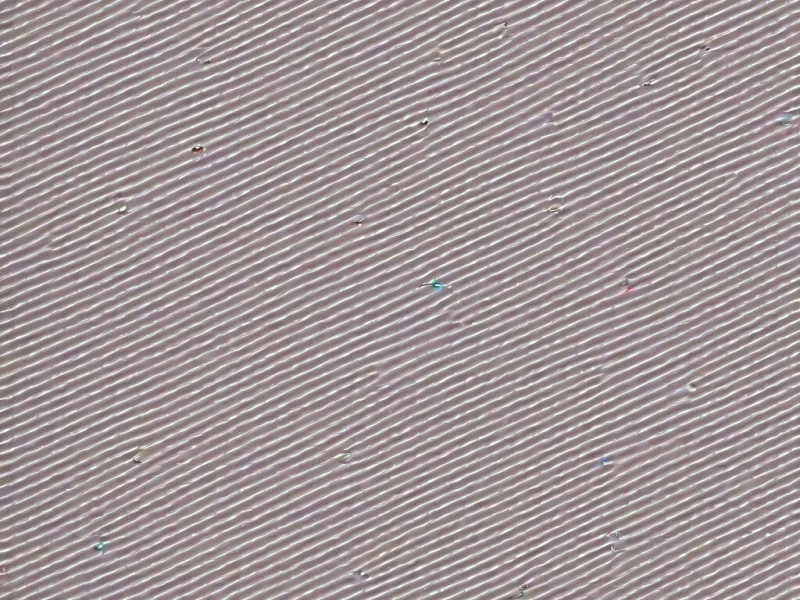Welcome to the Purple Amethyst Gemstones FAQ page. Here you’ll find answers to the most common questions about amethyst gemstones, from identification and value to care and metaphysical properties. If you don’t find your answer here, please visit our Contact page to reach out.
General Questions About Amethyst
What is amethyst?
Amethyst is a purple variety of quartz (silicon dioxide) that gets its distinctive color from iron impurities within its crystal structure. It’s one of the most popular and widely recognized gemstones in the world, valued for both its beauty and its accessibility at various price points.
Why is amethyst purple?
Amethyst’s purple color comes from trace amounts of iron (Fe³⁺ and Fe⁴⁺) within the quartz crystal structure, combined with natural irradiation. The iron impurities interact with light in a way that produces the characteristic purple hue, which can range from pale lilac to deep violet.
Where does amethyst come from?
Amethyst is found in many locations worldwide. The most notable sources include:
- Brazil: The largest producer, known for lighter purple stones
- Uruguay: Produces deep purple amethyst with excellent color saturation
- Zambia: Known for clear, richly colored specimens
- Russia: Historical source of fine Siberian amethyst
- United States: Found in Arizona, Colorado, North Carolina, and other states
- Madagascar, India, Sri Lanka, South Korea: Other significant sources
Each region produces amethyst with slightly different characteristics in terms of color, clarity, and crystal formation.
Is amethyst expensive?
Amethyst is generally affordable compared to other gemstones. Small, lower-quality pieces can cost just a few dollars, while large, high-quality specimens with deep color saturation can range from $20-100+ per carat. Exceptional museum-quality pieces or rare varieties (like bi-color ametrine) can command higher prices.
The accessibility of amethyst makes it perfect for both budget-conscious buyers and collectors seeking premium specimens.
What is the difference between amethyst and purple quartz?
These terms are essentially synonymous. Amethyst is purple quartz. All amethyst is quartz, but not all quartz is amethyst—the purple color is what distinguishes amethyst from other quartz varieties like clear quartz (rock crystal), smoky quartz, rose quartz, or citrine (yellow quartz).
Identification and Authenticity
How can I tell if my amethyst is real?
Real amethyst has several identifying characteristics:
- Color zoning: Natural amethyst often shows uneven color distribution or bands of different purple shades
- Inclusions: Real amethyst typically contains small imperfections, mineral inclusions, or tiny bubbles
- Hardness: Amethyst rates 7 on the Mohs scale—it will scratch glass but can be scratched by harder materials like topaz or diamond
- Cool temperature: Natural amethyst feels cool to the touch initially and warms slowly
- Color under light: Natural amethyst may show slight color variations under different lighting
Fake amethyst (usually glass or dyed quartz) often appears too perfect, with completely uniform color, no inclusions, and bubbles that are perfectly round (indicating glass).
What is the difference between natural and synthetic amethyst?
Natural amethyst forms in the earth over millions of years through geological processes. Synthetic amethyst is created in laboratories using methods that replicate natural conditions but produce crystals in days or weeks.
Key differences:
- Natural amethyst: Shows color zoning, natural inclusions, irregular crystal growth, unique character
- Synthetic amethyst: Often has extremely uniform color, very few inclusions, perfect clarity, looks “too perfect”
- Price: Natural amethyst commands higher prices, especially for fine specimens
- Ethical considerations: Synthetic is conflict-free but may not have the same collectible value
Both are real amethyst chemically, but natural stones are generally preferred for jewelry and collecting.
Can amethyst be lab-created or treated?
Yes, amethyst can be:
Lab-created (synthetic): Grown using hydrothermal processes that replicate natural formation. Synthetic amethyst is chemically identical to natural amethyst but created in controlled laboratory conditions.
Heat-treated: Natural amethyst is sometimes heated to:
- Lighten overly dark purple stones
- Remove unwanted brown tones
- Create citrine (heating amethyst to 450-500°C turns it yellow)
Irradiated: Some pale amethyst may be irradiated to enhance color
Reputable sellers should disclose any treatments. Natural, untreated amethyst is generally more valuable than treated stones.
How do I authenticate valuable amethyst?
For valuable amethyst pieces:
- Professional gemological testing: Have it examined by a GIA-certified gemologist
- Request certification: Ask for a gemological certificate from recognized labs (GIA, AGS, IGI)
- UV light testing: Some synthetic amethyst shows different fluorescence under UV light
- Refractive index testing: Professional equipment can measure optical properties
- Inclusion analysis: Microscopic examination of inclusions can confirm natural origin
For pieces over $500, professional authentication is worth the investment.
Value and Quality
What makes amethyst valuable?
Amethyst value depends on several factors:
Color: Deep, rich purple (especially “Siberian” quality) is most valuable. Stones with reddish or blue flashes are prized.
Clarity: Clean stones with minimal visible inclusions command higher prices, though some inclusions are expected in natural gems.
Cut: Well-cut stones that maximize color and brilliance are more valuable.
Size: Larger stones are rarer and more expensive per carat, though amethyst is available in large sizes more readily than many gems.
Origin: Certain sources (Uruguayan deep purple, Siberian amethyst) are more valuable.
Treatment: Natural, untreated stones are worth more than treated ones.
What is “Siberian” amethyst?
“Siberian” amethyst refers to the highest quality amethyst color—a deep purple with reddish or blue flashes. This term originated from exceptional amethyst historically mined in Russia’s Ural Mountains.
Important note: Today, “Siberian” is used as a quality grade rather than an origin designation. Deep purple amethyst from Brazil, Uruguay, or other sources may be called “Siberian quality” even though it wasn’t mined in Siberia.
How much should I pay for amethyst?
Pricing guidelines (per carat for cut stones):
- Commercial grade (pale color, visible inclusions): $2-10
- Good quality (medium purple, eye-clean): $10-25
- Fine quality (deep purple, excellent clarity): $25-50
- Exceptional quality (Siberian grade, flawless): $50-100+
- Museum specimens (rare formations, perfect color): $100-300+
Jewelry settings, designer pieces, and rare varieties like ametrine or green amethyst (prasiolite) will cost more. Large specimen clusters and geodes are typically priced by the piece rather than per carat.
What is the rarest type of amethyst?
The rarest varieties include:
- Ametrine: Bi-color crystals showing both purple (amethyst) and yellow (citrine) in the same stone
- Deep Siberian quality: Rich purple with perfect clarity and strong reddish flashes
- Large perfect crystals: Museum-quality single crystals over 10 carats with no visible inclusions
- Historic specimens: Amethyst from depleted Russian mines
- Unusual formations: Scepter crystals, phantoms, or unique inclusions
Care and Maintenance
How do I clean amethyst?
Amethyst is relatively easy to clean:
Safe methods:
- Warm water and mild soap with a soft brush
- Ultrasonic cleaners (use cautiously if stone has fractures)
- Soft, lint-free cloth for polishing
Avoid:
- Harsh chemicals or abrasive cleaners
- Prolonged exposure to very hot water
- Steam cleaning (thermal shock can cause fractures)
- Ultrasonic cleaning for heavily included or fractured stones
Rinse thoroughly and dry with a soft cloth. Clean regularly to maintain brilliance.
Can amethyst fade or change color?
Yes, amethyst can fade with prolonged exposure to strong sunlight or heat. The purple color comes from iron impurities that can be altered by:
- UV radiation: Direct sunlight over time can lighten purple color
- Heat: Temperatures above 400°C will change amethyst to yellow (citrine) or colorless
- Prolonged exposure: Constant display in direct sunlight may gradually fade color
Protection tips:
- Store away from direct sunlight
- Avoid leaving jewelry in hot cars or near heat sources
- Display specimens away from windows with strong UV exposure
- Consider UV-protective cases for valuable pieces
Not all amethyst fades at the same rate—some stones are more stable than others.
How should I store amethyst?
Proper storage protects amethyst from damage:
- Separate storage: Keep amethyst separate from harder gems (diamonds, sapphires) that could scratch it, and from softer materials it could scratch
- Soft pouches: Use individual fabric pouches or soft compartments
- Cool, dark location: Avoid direct sunlight and heat
- Stable environment: Avoid extreme temperature fluctuations
- Secure setting: Ensure jewelry settings are tight to prevent stone loss
For valuable pieces, consider a jewelry box with individual padded compartments or a safe deposit box.
Can amethyst be worn every day?
Amethyst rates 7 on the Mohs hardness scale, making it reasonably durable for jewelry but not as hard as sapphires (9) or diamonds (10).
Suitable for daily wear:
- Pendants, earrings, brooches (protected positions)
- Rings with protective settings or worn occasionally
Less suitable for daily wear:
- Rings with exposed settings (prone to scratches and chips from daily wear)
- Bracelets (frequent contact with hard surfaces)
If wearing amethyst rings daily, choose protective bezels or settings, remove during activities that could damage the stone, and inspect settings regularly to ensure security.
Metaphysical and Traditional Uses
Important Disclaimer: The information below describes traditional beliefs and cultural practices associated with amethyst. These claims are not scientifically validated and should not replace medical advice, diagnosis, or treatment. Consult qualified healthcare professionals for medical concerns.
What are the metaphysical properties of amethyst?
Traditional beliefs attribute various properties to amethyst:
- Spiritual awareness: Believed to enhance intuition and spiritual connection
- Calming energy: Traditionally used for emotional balance and stress relief
- Mental clarity: Associated with clear thinking and decision-making
- Protection: Historically worn as a protective talisman
- Sobriety: The ancient Greeks believed amethyst prevented intoxication (its name means “not drunk” in Greek)
These are cultural traditions and spiritual beliefs, not scientifically proven effects.
How do I use amethyst for meditation?
Traditional meditation practices with amethyst include:
- Holding during meditation: Place in your palm or lap during practice
- Third eye placement: Some traditions place it on the forehead
- Creating a calm space: Display in meditation areas
- Focus object: Use as a visual focus point during meditation
- Carrying: Keep in pocket as a tactile reminder of intentions
The effectiveness of these practices is subjective and based on personal belief rather than scientific evidence.
What chakra is amethyst associated with?
In chakra traditions, amethyst is primarily associated with:
- Crown Chakra (Sahasrara): Believed to enhance spiritual connection
- Third Eye Chakra (Ajna): Associated with intuition and insight
These associations come from color symbolism and traditional energy work practices, which are spiritual concepts rather than scientifically measurable phenomena.
Can amethyst help with sleep or anxiety?
Some people report subjective benefits from keeping amethyst near their bed or carrying it during stressful situations. Traditional beliefs suggest it promotes:
- Restful sleep
- Reduced nightmares
- Emotional calm
- Stress relief
Important: These effects are not scientifically proven. If you experience sleep disorders or anxiety, consult healthcare professionals. Amethyst should complement, not replace, medical treatment. Any benefits experienced are likely due to placebo effect, the ritual of self-care, or personal belief rather than properties of the stone itself.
Buying and Collecting
Where should I buy amethyst?
Reputable sources include:
Physical stores:
- Established jewelry stores
- Gem and mineral shows
- Museum shops
- Specialty crystal retailers
Online sources:
- Reputable gem dealers with good reviews
- Established marketplace sellers with return policies
- Auction houses for rare specimens
- Direct from miners (for specimens)
What to look for:
- Clear return policies
- Detailed photos and descriptions
- Disclosure of treatments
- Authenticity guarantees
- Positive customer reviews
Avoid sellers who make exaggerated claims (especially medical/healing claims) or prices that seem too good to be true.
What should I look for when buying amethyst jewelry?
Key considerations:
Stone quality:
- Color intensity and uniformity
- Clarity (minimal visible inclusions)
- Cut quality (good symmetry, proper proportions)
- Size appropriate for the piece
Setting quality:
- Secure prongs or bezel
- Quality metal (gold, sterling silver, platinum)
- Professional workmanship
- Setting that protects the stone
Seller reputation:
- Return policy
- Authentication or certification
- Treatment disclosure
- Fair pricing
Personal preferences:
- Color shade you prefer
- Style that fits your wardrobe
- Budget considerations
Is amethyst a good investment?
Amethyst is generally not considered a strong investment gemstone because:
- Abundant supply: Large deposits mean prices remain relatively stable
- Synthetic availability: Lab-created alternatives keep prices moderate
- No dramatic appreciation: Unlike rare gems, amethyst doesn’t typically increase dramatically in value
However, certain pieces have investment potential:
- Museum-quality specimens with exceptional color
- Historic pieces with provenance
- Rare varieties (ametrine, unique formations)
- Fine antique jewelry
- Large, flawless single crystals
Buy amethyst primarily for enjoyment rather than investment. If it appreciates, consider it a bonus.
What is the difference between amethyst and ametrine?
Amethyst: Purple quartz colored by iron impurities
Ametrine: A bi-color variety containing both purple (amethyst) and yellow (citrine) in the same crystal. This occurs naturally when portions of an amethyst crystal are heated by geological processes while other portions remain cool, or through differential oxidation states of iron.
Key differences:
- Ametrine is much rarer than amethyst
- Ametrine commands higher prices
- Most ametrine comes from Bolivia’s Anahi mine
- Ametrine shows distinct color zoning (purple and yellow zones)
- Some ametrine in the market is synthetic or created by partially heating amethyst
Technical Questions
What is amethyst’s hardness?
Amethyst rates 7 on the Mohs hardness scale. This means:
- It can scratch glass (5.5 on Mohs scale)
- It will be scratched by harder materials like topaz (8), corundum (9), or diamond (10)
- It’s harder than most common materials but softer than many other gemstones
- Suitable for most jewelry but needs care in high-wear situations
What is the chemical composition of amethyst?
Amethyst is silicon dioxide (SiO₂) with trace amounts of iron (Fe³⁺ and Fe⁴⁺). The chemical formula is SiO₂ + Fe.
The iron content is very small (typically less than 100 parts per million) but sufficient to create the purple color when combined with natural irradiation.
Does amethyst have any industrial uses?
Unlike some gemstones, amethyst has limited industrial applications because:
- Clear quartz is more useful: Colorless quartz is preferred for industrial applications like electronics and optics
- Synthetic alternatives: Industrial needs are met with manufactured quartz crystals
- Primarily ornamental: Amethyst’s value lies in its aesthetic appeal
However, quartz in general (including amethyst) has been used in:
- Historical timekeeping devices
- Electronic oscillators (synthesized quartz)
- Optical instruments
Today, amethyst is valued almost exclusively for decorative and jewelry purposes.
Can amethyst scratch or damage other materials?
Yes, at hardness 7, amethyst can scratch:
- Glass (5.5)
- Most metals including gold and silver
- Softer gemstones like pearl (2.5-4.5), opal (5.5-6.5)
- Wood, plastic, and organic materials
Store amethyst separately from softer materials and be cautious about surfaces where you place amethyst jewelry or specimens.


